Ocean Ramsey’s Top 12 Shark Safety Tips You Need To Know

Imagine swimming alongside a massive shark, feeling both awe and a healthy dose of caution. Ocean Ramsey, famous marine biologist and shark conservationist, has spent thousands of hours doing just that.
Her unique experience has taught her crucial safety measures that anyone entering shark habitats should know. These expert tips could make all the difference between a magical underwater encounter and a dangerous situation.
1. Understand Shark Body Language
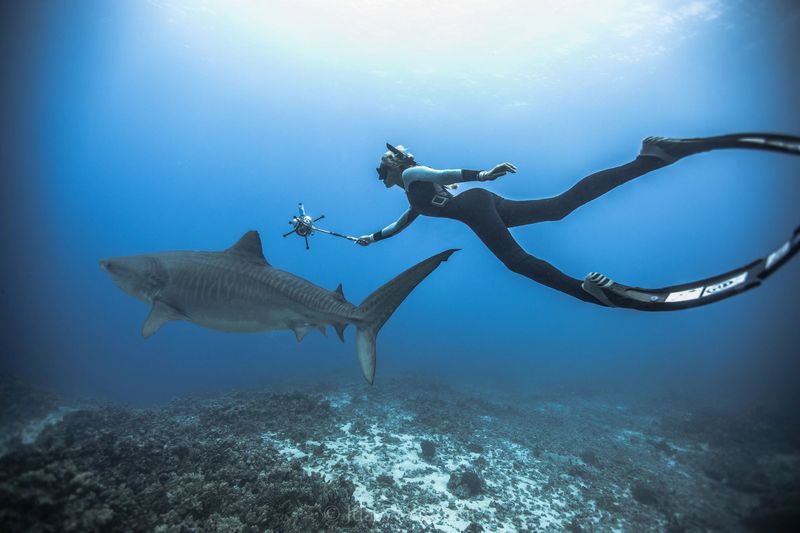
Sharks communicate through body movements that signal their intentions and mood. Lowered pectoral fins, arched back, and exaggerated swimming patterns often indicate agitation or potential aggression.
Learning to read these signs gives you precious seconds to react appropriately. When a shark appears, watch for quick, jerky movements or repeated approaches that get progressively closer – these aren’t casual curiosity.
Most sharks investigate with slow, deliberate movements when merely curious. The difference between investigation and hunting behavior could save your life when you’re sharing the water with these magnificent predators.
2. Stay Calm To Avoid Drawing Attention

Your heart races when you spot a shark nearby – it’s natural. Fighting this instinct might be your best defense. Sharks detect erratic movements and elevated heart rates, which mimic injured prey.
Breathe slowly through your regulator or snorkel. Keep your movements smooth and deliberate, never thrashing or splashing. Maintain your position in the water column rather than rushing to the surface.
The goal is to appear uninteresting and in control. Sharks typically investigate potential food sources, and calm swimmers rarely fit that profile. Your composed demeanor communicates that you’re neither prey nor threat.
3. Learn The Redirecting Technique

Redirecting works by using your hands to gently guide an approaching shark away from your body. Position your palm toward the shark’s snout, maintaining eye contact while creating space between you and the animal.
The technique requires practice and precision. Never push aggressively or grab at the shark – this could trigger a defensive response. Instead, use minimal pressure to redirect its momentum.
Professional shark divers practice this skill extensively before attempting it in the wild. The redirecting technique respects the shark’s space while establishing boundaries, creating a safer interaction for both human and animal.
4. Don’t Flee In Panic
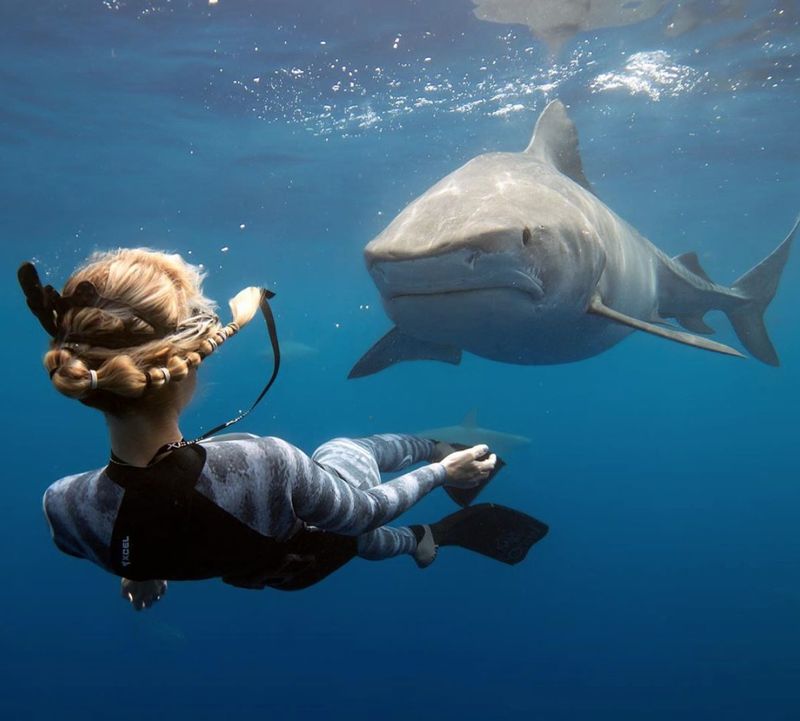
Running away triggers the predator chase response hardwired into sharks’ brains. Sudden movements mimic injured prey behavior, potentially transforming you from an uninteresting object into dinner.
Face the shark while slowly backing away. Maintain eye contact – sharks respect direct visual engagement. Your goal is creating distance without triggering hunting instincts.
Swimming frantically creates vibrations in the water that sharks can detect from remarkable distances. These signals might attract additional sharks to investigate the commotion. Controlled, deliberate movements communicate confidence rather than vulnerability, significantly reducing your risk profile.
5. Avoid Swimming At Dawn Or Dusk
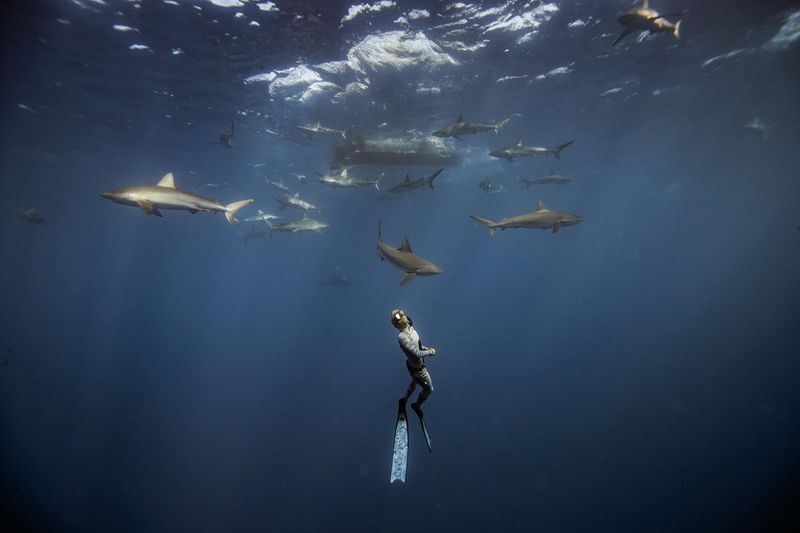
Sharks hunt most actively during low-light transition periods when their prey is disadvantaged. Their specialized vision excels in these conditions, while humans struggle to see clearly.
Early morning and late afternoon create the perfect hunting scenario for sharks. They can approach undetected while you’re visually compromised. Many shark species use these strategic feeding windows to maximize their success rate.
Plan your ocean activities between 10 AM and 4 PM when possible. During these hours, visibility is optimal for spotting potential threats, and shark activity typically decreases. This simple timing adjustment significantly reduces your chances of an unwanted shark encounter.
6. Avoid Areas With Fishing Activity Or Baitfish

Fishing boats create irresistible dinner bells for sharks. Blood, fish parts, and bait in the water trigger feeding responses that can last hours after fishing activity ends. These scent trails can draw sharks from miles away.
Schools of small, frantic baitfish signal buffet time in shark language. Their erratic movements and distress signals broadcast vulnerability across the underwater landscape. Predators naturally converge on these opportunities.
Check with local lifeguards about recent fishing activity before entering the water. Avoid areas where birds are diving repeatedly into the water – this often indicates baitfish schools below. Smart location choices dramatically reduce your chances of unwanted shark encounters.
7. Don’t Enter The Water Alone
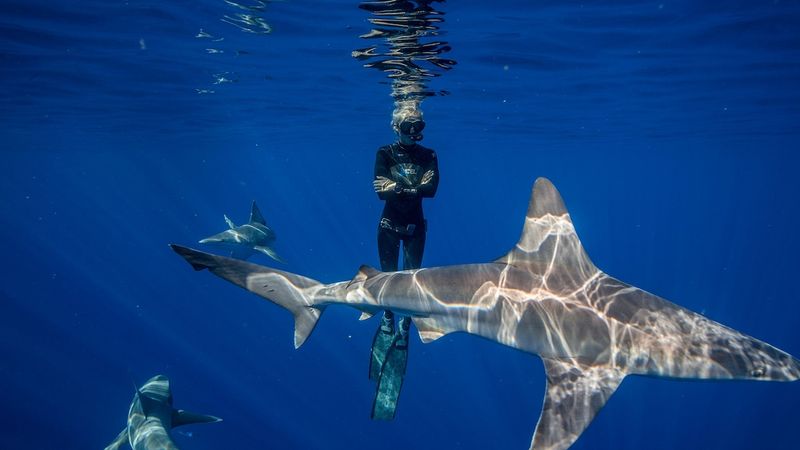
Swimming buddies provide extra sets of eyes scanning for potential threats. They can spot approaching sharks from angles you can’t see, giving crucial warning time. This mutual vigilance creates a significant safety advantage.
Medical emergencies happen underwater – having someone who can assist or seek help could save your life. Your partner can also help remain calm during a shark encounter, reinforcing appropriate response behaviors.
Groups appear larger and more intimidating to investigating sharks. Solitary swimmers more closely resemble vulnerable prey. Many beaches worldwide now recommend or require buddy systems specifically because of their proven effectiveness in preventing dangerous wildlife encounters.
8. Skip Shiny Jewelry Or Reflective Gear
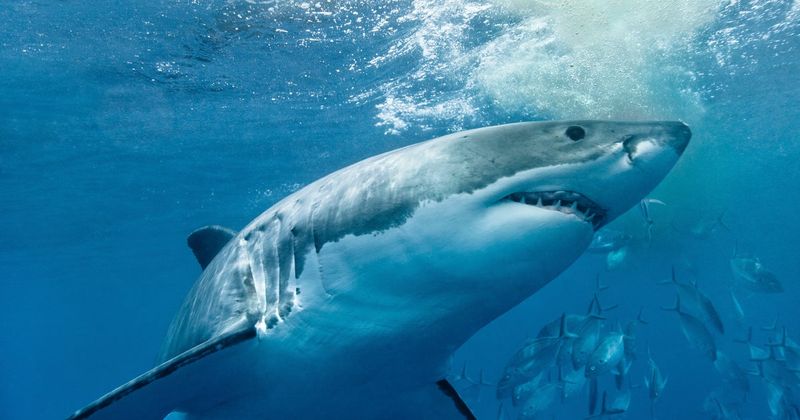
Flashing jewelry creates underwater light patterns remarkably similar to fish scales catching sunlight. These deceptive signals can trigger a shark’s hunting response from surprising distances. Even waterproof watches with metallic bands pose unnecessary risk.
Bright swimwear with reflective patterns presents the same problem. Sharks have evolved to notice visual anomalies that might indicate food. Your fashion choices could unintentionally mimic their natural prey indicators.
Opt for matte-finish equipment and subdued colors that blend with the ocean environment. Remove watches, rings, anklets, and other metallic items before entering shark territory. These simple adjustments help you avoid sending visual cues that might attract unwanted attention.
9. Stay In Sight Of A Safety Boat Or Ladder
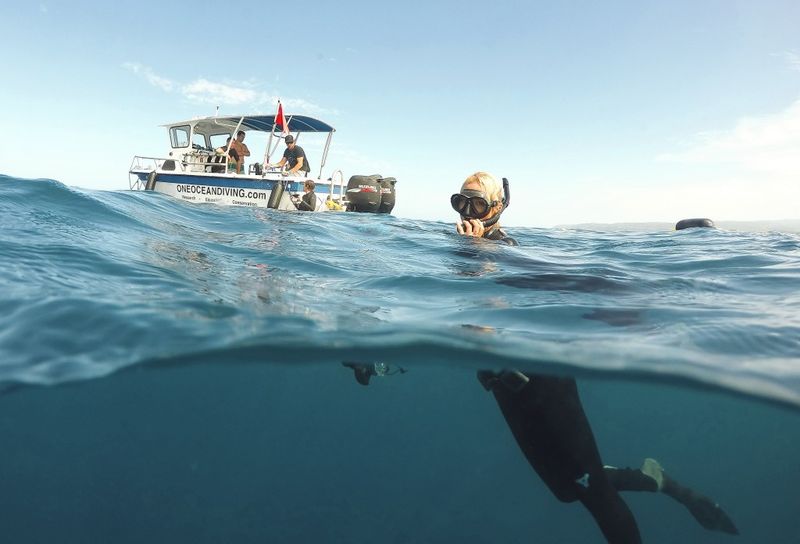
Quick exit strategies save lives during unexpected shark encounters. Always identify your fastest route to safety before entering the water. Mental preparation reduces panic response time when seconds matter most.
Safety boats provide elevated spotting platforms where crew can monitor for shark activity. Their broader perspective often detects approaching predators before swimmers notice anything unusual. Professional operators use specific shark spotting techniques to keep clients safe.
Swimming near exit points reduces your vulnerable exposure time if evacuation becomes necessary. Experienced ocean guides position their groups strategically near boats or exit ladders specifically for this reason. This simple positioning tactic remains one of the most effective preventative measures in shark encounter management.
10. Get Professional Training

Certified shark awareness courses teach recognition of high-risk situations before they become dangerous. Students learn to identify behaviors that precede aggressive interactions, gaining precious reaction time. These skills develop through structured scenarios with experienced instructors.
Hands-on training builds muscle memory for emergency responses. When adrenaline floods your system during a real encounter, these practiced movements become automatic. Professional courses simulate various encounter types to prepare you for different scenarios.
Training programs often include practical experience with smaller, non-aggressive shark species. This controlled exposure builds confidence while teaching respect for these magnificent predators. The investment in proper training pays dividends in both safety and appreciation.
11. Respect Their Role In The Ecosystem
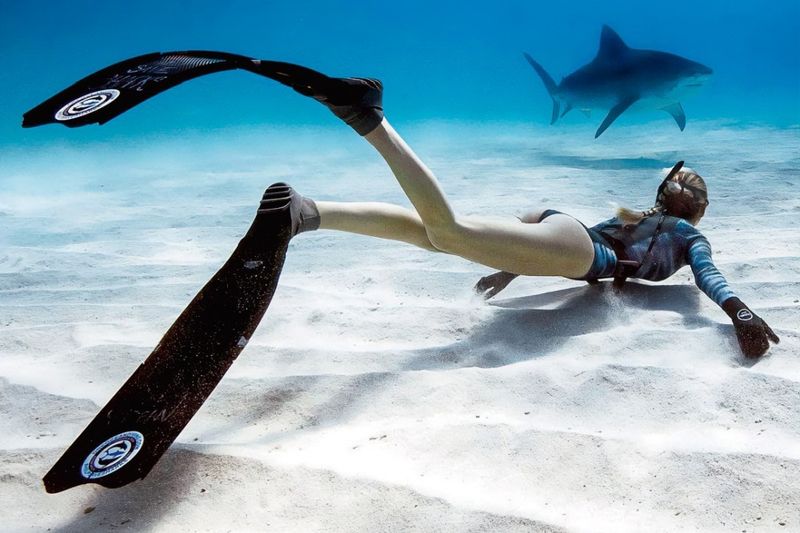
Sharks maintain healthy ocean ecosystems by removing weak and sick animals. Without these apex predators, marine environments quickly fall out of balance. Understanding their ecological importance fosters respect rather than fear.
Approaching sharks with curiosity instead of terror changes how you behave in their presence. Respectful interactions acknowledge their space and purpose. This mindset naturally encourages safer behaviors around these animals.
Healthy fear differs from irrational panic. Appreciating sharks as essential components of ocean health helps calibrate your response appropriately. Most shark species have little interest in humans unless provoked or confused. Their ecological value far outweighs the minimal risk they pose to informed ocean users.
12. Know How To Respond To An Emergency Bite

Immediate pressure stops blood loss in shark bite emergencies. Use whatever’s available – towels, shirts, or rash guards – pressed firmly against the wound. Direct pressure saves lives while waiting for professional help.
Elevate bitten limbs above heart level when possible. This simple positioning reduces blood flow to the injury. Remember that most shark bites aren’t immediately fatal if proper first aid is applied quickly.
Getting out of the water becomes your top priority after any bite occurs. Additional sharks may be attracted to blood in the water. Alert others nearby to exit immediately while assisting the injured person to safety. Quick, decisive action during these rare events dramatically improves survival rates.






